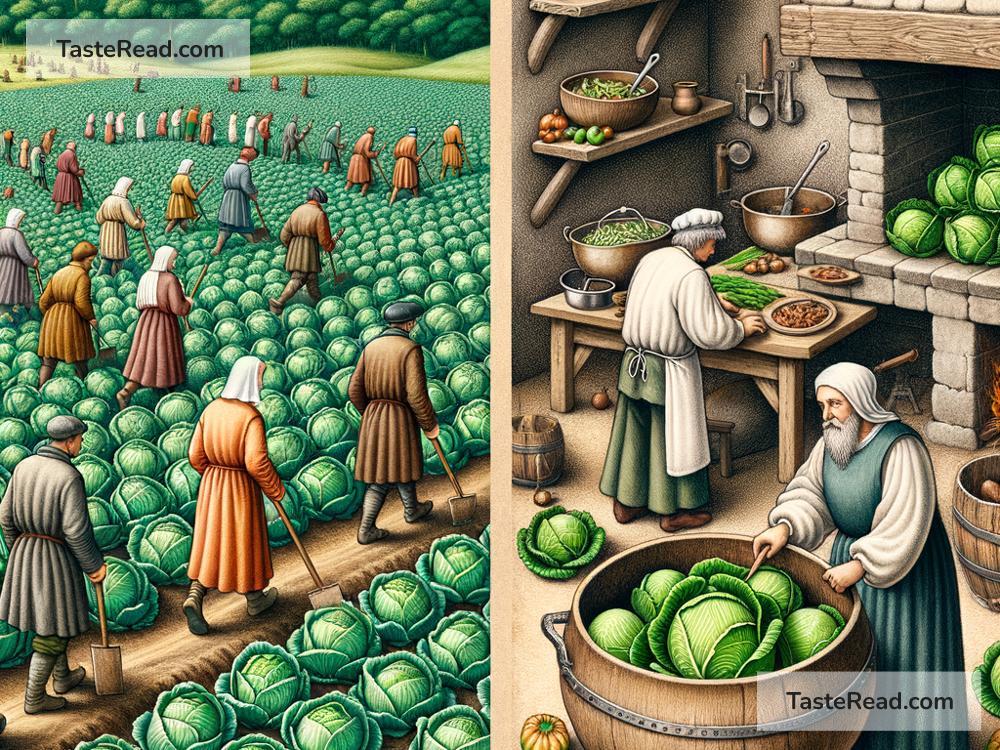The Fascinating History of Cabbage in Ancient Diets
Cabbage—an unassuming round, leafy vegetable—is a staple in kitchens all over the world today. But have you ever wondered where this humble food came from and how it made its way into ancient diets? Its history is surprisingly fascinating and stretches back thousands of years. Let’s explore the story of cabbage’s journey through time.
Cabbage’s Wild Beginnings
Cabbage as we know it today didn’t always exist. Its ancestor was a wild plant known as “wild mustard” (Brassica oleracea), which grew along the coastlines of Europe. This hardy plant wasn’t anything like the smooth cabbage heads we see in supermarkets—it had loose leaves and grew more like a shrub.
Over many centuries, humans started to cultivate wild mustard. They selectively bred it to enhance certain traits, like its large, tightly packed leaves. By around 3000 BC, early farmers had created a plant that closely resembled modern cabbage. People appreciated its tough nature; cabbage could survive harsh weather, poor soils, and last for days without spoiling, making it a reliable food source.
Cabbage in Ancient Egypt
The first documented use of cabbage in food can be traced back to ancient Egypt. Egyptians valued cabbage for its medicinal properties. Doctors and healers believed cabbage could cure illnesses, soothe inflammation, and improve digestion. There’s even evidence that cabbage was served at royal banquets in Egypt, though it wasn’t yet as common among everyday people.
Ancient Greece: Food and Medicine
By the time cabbage reached ancient Greece, it was already considered both food and medicine. Greek farmers cultivated the vegetable and used it in their diets, while Greek scholars sang its praises in texts and poems. Philosophers like Pythagoras (famous for math, but also fond of cabbage) believed it had powerful healing properties.
Greek doctors recommended cabbage to treat everything from headaches to stomach troubles. There’s even evidence that cabbage juice was used to heal wounds! Because of its sturdy leaves, cabbage also became a popular crop for Greek farmers, who valued its ability to thrive and feed large families.
Cabbage in Rome: A Soldier’s Food
When the Roman Empire came into power, cabbage became more popular than ever. The Romans were highly skilled farmers, and they grew many varieties of cabbage. They especially appreciated its long shelf life, which made it perfect for long journeys or wars.
Roman soldiers often carried cabbage with them as food while on campaigns. It was easy to transport and gave them the energy they needed to march and fight. Some Roman generals even believed cabbage had special powers that helped soldiers stay healthy during battle.
Like the Greeks, Romans used cabbage for medicinal purposes too. Cato the Elder, a Roman politician and statesman, was one of cabbage’s biggest fans. He wrote extensively about its health benefits, claiming it could cure almost any illness. Cabbage soup, for example, was a popular remedy for colds and fevers.
Cabbage Travels East
While cabbage was flourishing in Europe and the Mediterranean, it also began spreading east to Asia. Traders traveling the Silk Road likely introduced cabbage to new regions. By around 500 BC, cabbage was being grown in places like China and India.
Asian cultures adapted cabbage to their cooking styles, creating many of the dishes we enjoy today. One famous example is kimchi, a fermented cabbage dish from Korea that has been eaten for centuries. In China, cabbage became a key ingredient in traditional stir-fries and soups.
Medieval Europe: A Common Crop
During the Middle Ages, cabbage became one of the most important crops in Europe. Most families depended on it for survival because cabbage was cheap, nutritious, and easy to grow in colder climates. Peasants often ate boiled cabbage, sometimes paired with bread or meat if they were lucky.
Cabbage was also used to prevent diseases like scurvy, caused by a lack of vitamin C. Sailors packed cabbage into their ships for long journeys to avoid getting sick. For many people during this time, cabbage was the cornerstone of their diet.
Cabbage in the Modern World
Today, cabbage has become a beloved vegetable across the globe. It’s used in countless recipes, from slaws and salads to hearty soups and stir-fries. Some cultures continue to hold cabbage in high esteem for its health benefits, while others appreciate its versatility in the kitchen.
What makes cabbage unique is its ability to reflect the history and culture of the people who prepare it. Whether you’re eating sauerkraut in Germany, borscht in Ukraine, stir-fried cabbage in China, or coleslaw in the United States, cabbage has played a major role in shaping diets throughout history.
Final Thoughts
The story of cabbage is one of resilience and adaptability. From a wild plant growing along European coastlines to an essential crop in ancient civilizations, it has nourished humanity for thousands of years. It was not only food but also medicine and even a symbol of survival during difficult times.
So, the next time you cook with or eat cabbage, take a moment to appreciate its incredible journey. This simple vegetable has carried centuries of history and culture straight to your plate!


